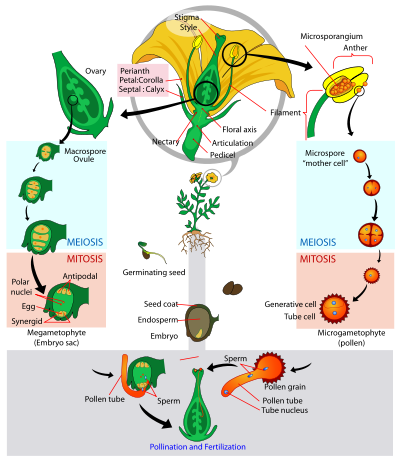Reproduction
Angiosperms go through both haploid (gametophyte) and diploid (sporophyte) generations. The sporophyte generation is dominant. They are heterosporous, meaning that they produce both male and female spores. The male parts of the flower consist of the stamen, anther (produces pollen through meiosis), and filament. The female parts are the carpel, ovary, style, and stigma.
The sporophyte generation produces enticing flowers to draw in insects for pollination. Angiosperms don't go through direct fertilization. Insects covered in pollen brush against the sticky stigma. The grains (haploid) that stick to the stigma then travel down the style and into the ovary. The ovaries (meagasporangia) produce megaspores via meiosis. They form a diploid zygote with the pollen (haploid microspore). A microspore pollinates the egg (megaspore) and another pollinates two polar nuclei. The egg and pollen (both haploid) form the zygote and the two nuclei form the endosperm. The zygote forms into the next sporophyte generation and matures to go through the cycle again.
Visit Habitat to see where you can find Kiss Me Quick.
Would you like to go Home?
